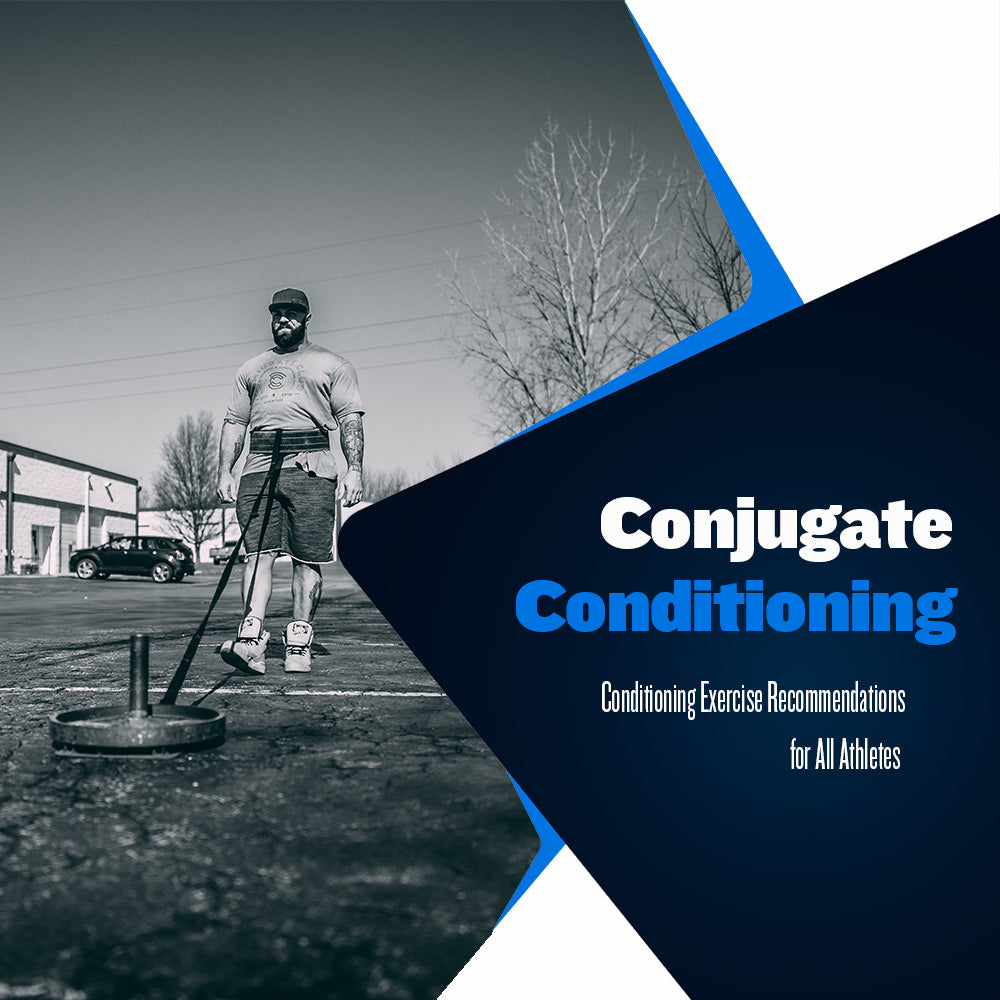Conjugate Conditioning

As you already know, the Conjugate Method can be applied to any sport and can increase an athlete's strength, speed, and durability. When many think of Westside Barbell and the Conjugate Method, they instantly think of large individuals lifting massive weights.
However, over the years, Westside Barbell has utilized the Conjugate Method to improve our athletes' strength and speed while significantly improving their conditioning. At Westside, the training and pace of the average max effort or dynamic effort training day can be enough to raise the conditioning of some.
We have worked with powerlifters, fighters, grapplers, football players, baseball players, track athletes, CrossFit athletes, etc. No matter the athlete or sport, they leave stronger, faster, and in better physical shape than when they arrived.
Below, we will cover some of our go-to conditioning exercises that coaches can implement for any athlete.
Sled Drags
The sled drag is the simplest way to perform conditioning work using a loaded implement. You can significantly improve your conditioning as long as you have a belt, a tow strap, and a sled.
Depending on the direction you pull the sled, sled drags are a great way to raise conditioning levels while simultaneously achieving some anterior and posterior lower body training. If you pull the sled forward, you can focus on the calves, glutes, and hamstrings. You can target the hip flexors and quads if you pull the sled backward.
You can further alter the training effect by changing stride length or foot strike. We recommend loading up a weight you can pull for at least ten trips for 30-50 yards per trip for conditioning purposes.
As you progress and your conditioning improves, you can begin adding additional stimulus to the exercise. Optimally conditioned athletes perform sled drags while carrying kettlebells or a loaded safety squat bar on their shoulders.
Belt Squat Walks
This exercise is a great way to increase an athlete's conditioning while providing effective hip, glute, hamstring, and quad training. Belt squat walks are typically performed for time; however, you can also perform them for steps. Ideally, you want to keep a one-step per-second pace if possible.
Typically, our athletes will walk for two minutes each set, with one-minute rest between each set. This is done until the athlete cannot meet or come close to the one-step per second standard throughout a set.
There are a few ways we alter the training effect of belt squat walks. The first two ways are similar to the sled; athletes will either walk forward in the belt squat for a posterior focus or backward for an anterior focus. We also utilize a side-to-side "wobble" type walk to target the glutes and hips.
Wheelbarrow Walks / Farmer's Walk
These two exercises check two boxes; great for conditioning and great for grip training. These implements allow us to not only tax the lower body conditioning of an athlete, but considering the burden placed on the hands and torso, the upper body is taxed as well.
At Westside, we perform these exercises in two ways; heavy amounts of weight for max distance each trip or light to moderate amounts of weight at specific distances each trip.
When walking a heavy amount of weight for a max distance, the athlete will move the weight as far as they can each trip. The exercise would end when the athlete is fatigued or moves the implement 20 fewer yards than the original distance. When walking light to moderate weight at a specific distance, you will perform the walks with the same programming structure used for sled trips.
Leave No Stone Unturned
Don't believe that just because your sport doesn't require large amounts of cardiovascular output, you do not need improved conditioning levels. No matter the sport or athlete, we all can benefit from improved conditioning.
By raising your fitness level, you improve your overall health and your ability to train at higher levels of intensity and volume while recovering faster. For many, a lack of physical conditioning keeps them from reaching the next level in their sport.
Do yourself and your heart a favor, and throw some conditioning work in every week at the end of your training days. It doesn't take much time or equipment, and it can make a tremendous difference in your overall health and athletic abilities.
Sources:
Simmons, L. (2015) Special Strength Development for All Sports. Westside Barbell.
Simmons, L. (2007). Westside Barbell Book of Methods. Westside Barbell.




